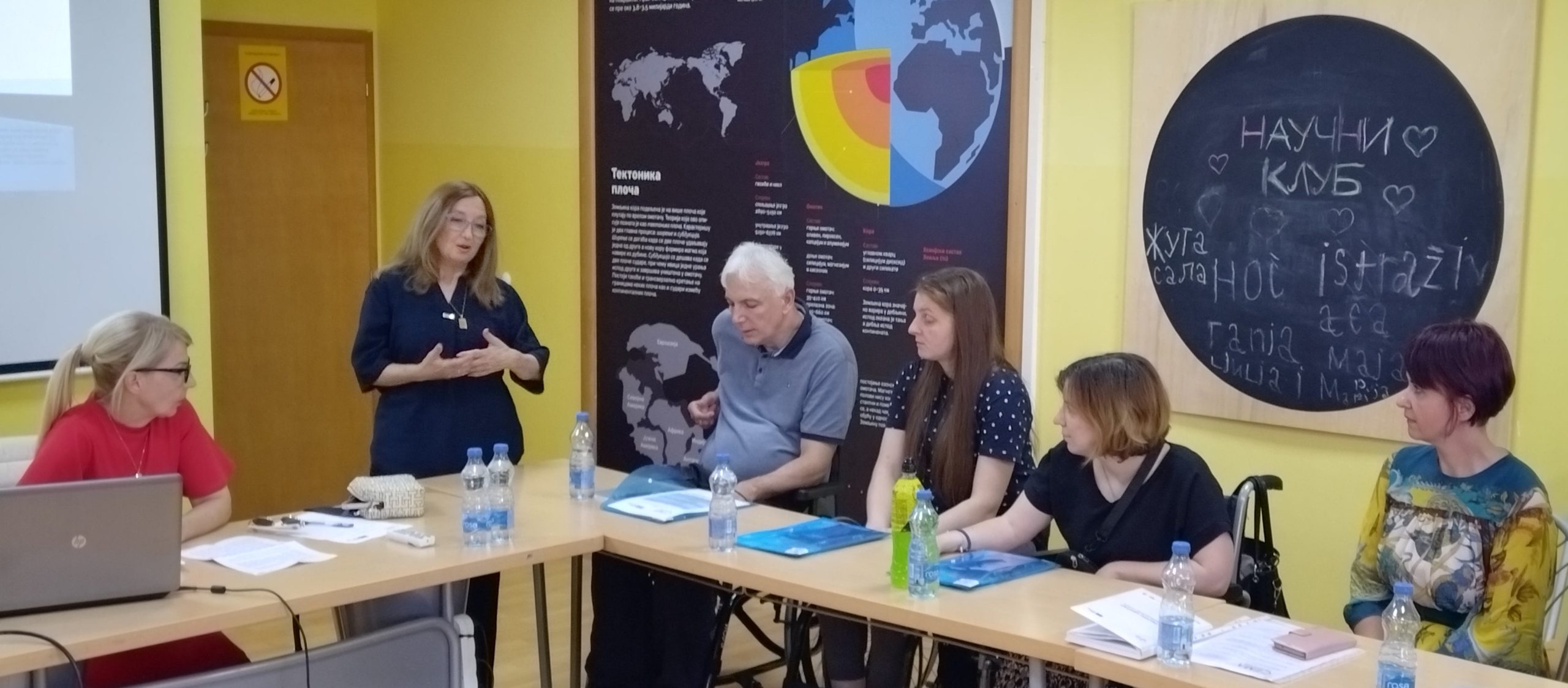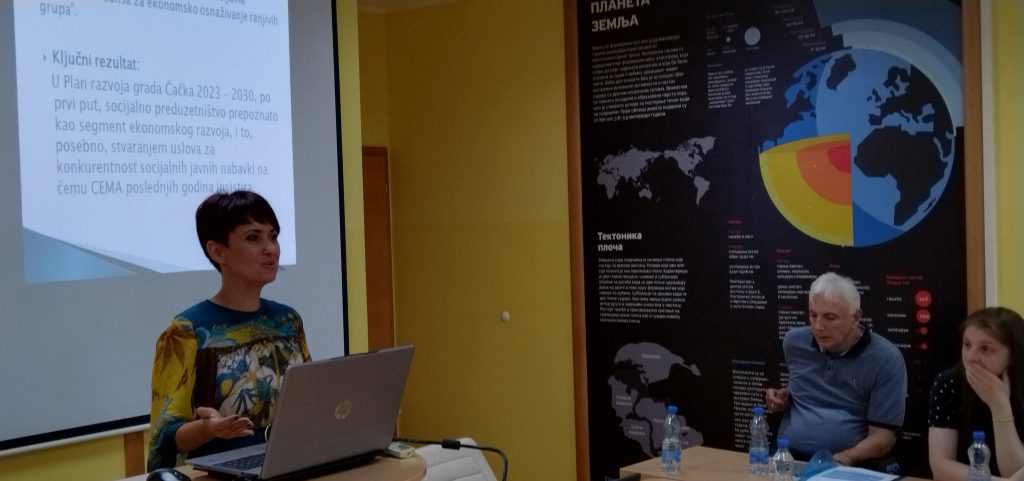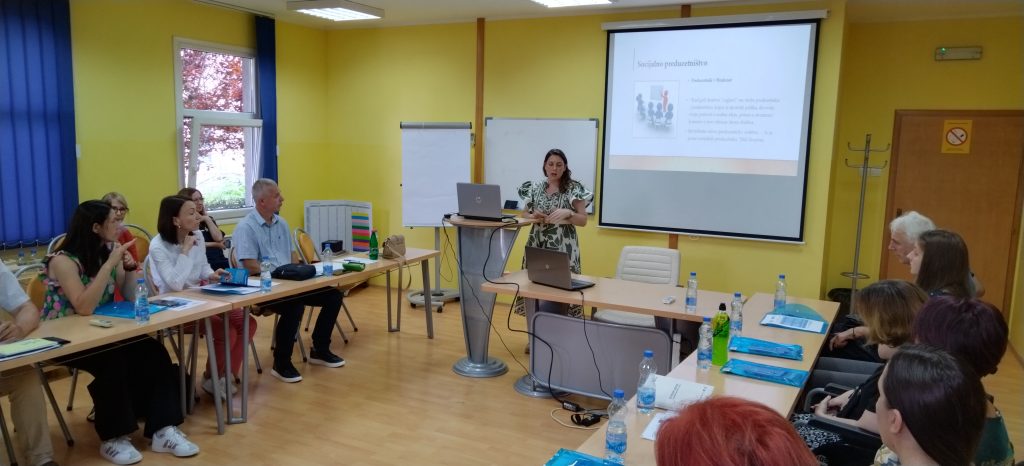
This is a story about resilience, innovation, and the power of grassroots activism. In the heart of western Serbia, in Čačak, a movement developed—one that redefines social entrepreneurship, creates economic opportunities for vulnerable groups and challenges institutional complexity.
The Centre for Monitoring and Activism (CEMA), an NGO founded by journalists in 2015, embarked on a mission to transform not only policies but also lives. With the support of the TRAG Foundation and the European Union, their efforts gained momentum and created a lasting impact.
A Vision for Inclusion
Recognising the need for economic empowerment among persons with disabilities and women over 45, CEMA launched “Social Entrepreneurship—A Chance for Economic Empowerment of Vulnerable Groups.
At the project’s inception, the local government in Čačak had no legal recognition or financial incentives for social enterprises, making it difficult for these businesses to thrive. “We realised that economic empowerment isn’t just about skills but also about confidence and systemic support,” says Svetlana Kojanović, project manager at CEMA.
Unlike traditional businesses, which focus solely on profit, social enterprises operate with a dual purpose: financial sustainability and social impact. They reinvest profits to address social challenges, making them a crucial tool for economic inclusion and community development. However, without a dedicated legal framework, these enterprises struggle to access funding and recognition, limiting their growth and impact.
“Social enterprises provide opportunities for those often left out of traditional economic structures, but without clear regulations and institutional backing, many people hesitate to take that first step. We wanted to change that”

From Advocacy to Action
CEMA’s strategy was twofold: equipping participants with the knowledge to navigate entrepreneurship while simultaneously advocating for legal changes. Through consultations, focus groups, workshops, and public debates, over 700 individuals participated in shaping a new economic landscape.
Despite resistance from local authorities—who often dismissed their efforts as “foreign-funded influence”—CEMA found an ally in the people. “We were ignored, but the community saw us differently,” explains Dragana Matović, program manager at CEMA. “We had people reaching out to us daily, asking for guidance, wanting to know how they could be part.”
The media played a significant role in amplifying CEMA’s efforts. “Our colleagues from local media never missed an opportunity to cover our events and share our stories,” Matović adds.
One key challenge in advancing social entrepreneurship in Serbia has been the legal uncertainty surrounding it. “We fought for years to ensure that social enterprises had a legal standing,” Matović explains. The Law on Social Entrepreneurship was finally passed after five attempts in parliament, but its implementation remains slow and inconsistent.”
The main issue is the lack of complementary regulations and financial incentives. “The law exists, but without precise bylaws and defined mechanisms for subsidies, grants, and tax relief, it remains largely symbolic,” Kojanović adds. Many potential social entrepreneurs are left in a bureaucratic limbo, unsure of how to proceed.”
CEMA and its partners advocated for clear procedural guidelines to make social entrepreneurship accessible. ”We worked on multiple fronts—raising awareness, consulting with local governments, and engaging the business sector,” Matović continues. ”Despite our efforts, real progress is limited without state-level commitment.”
The most significant victory came in August 2023 when, for the first time, the City Development Plan of Čačak (2023-2030) formally recognised social entrepreneurship. Though initially limited to just two paragraphs, this inclusion paved the way for developing a Local Action Plan for Employment, which would provide financial and structural incentives for social enterprises.
”This was a crucial step,” Kojanović notes. ”It means that the local government can no longer ignore social entrepreneurship. The foundation is laid, and now we can push for concrete policies like startup incentives and social procurement strategies.”
Darko’s Story: A Testament to Change
One day, the CEMA office phone rang. On the other end was Darko, a young man with a vision. Having lost his left arm as a child, he was determined to establish a social enterprise producing orthopaedic aids. However, he quickly discovered that existing business structures and bureaucratic hurdles made it nearly impossible for someone like him to start a business.
”I asked many people about the process of starting an enterprise, but no one had clear answers,” Darko recalls. ”Then I found CEMA. They didn’t just give me answers; they gave me hope.”
Despite limited information at the time, CEMA provided him with mentorship and guidance. Unfortunately, at the very beginning, due to the lack of institutional financial support for starting a business, his family had to provide that support. After two years of persistent struggle with bureaucratic procedures, Darko established NRG d.o.o., producing orthopaedic aids. His success was not just personal—it symbolised what was possible when systemic barriers were broken.
”It wasn’t just about the business,” Darko adds. ”It was about proving that people like me could be entrepreneurs, that we could contribute and make a difference.”

Looking Ahead: A Resource Center for Social Enterprises
CEMA’s next mission is establishing a Resource Center for Social Entrepreneurship in the Moravica District, a hub providing training, funding guidance, and advocacy support. However, challenges remain—without a national programme for social entrepreneurship, the sector is still fragile.
Currently, Serbia has only 21 officially registered social enterprises, despite over 500 businesses operating under the principles of solidarity economy. “Without a structured policy at the national level, local initiatives like ours remain isolated efforts,” says Matović. “We are doing everything we can, but at some point, the government must step in and create a framework that truly supports these businesses.”
Conclusion: A Model for Future Change
CEMA’s work demonstrates that grassroots activism when combined with persistence and public engagement, can lead to tangible policy change. While there is still a long road ahead, the organisation’s impact is undeniable—individuals like Darko now have a future in social entrepreneurship, and Čačak has set a precedent for other municipalities to follow.
”This is just the beginning,” says Kojanović. ”We have proven that change is possible. Now, we must ensure it is sustainable.”
Matović adds, “The most rewarding part? Seeing people who once felt powerless now take control of their futures. That’s why we do this.”
